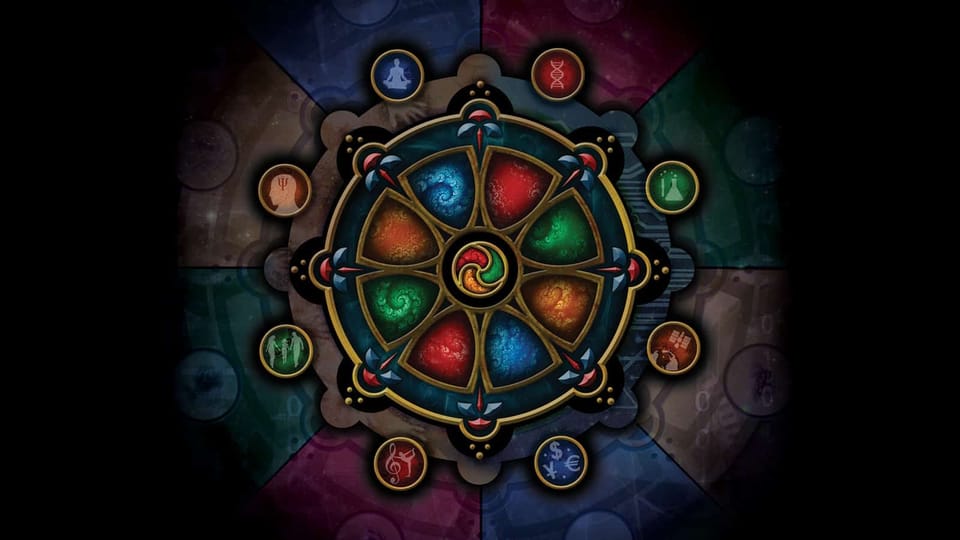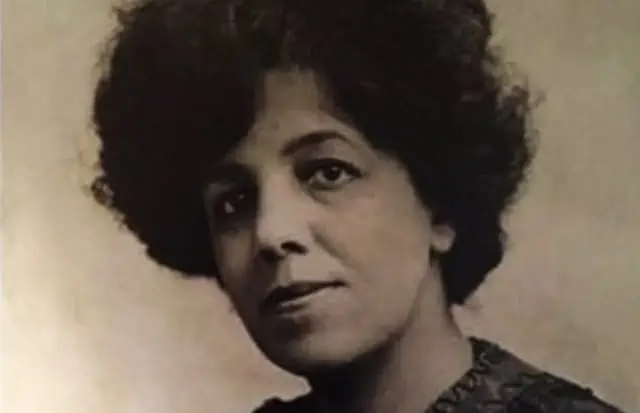The Fourth Turning: A Revolutionary Theory of History

The Fourth Turning is a book that explores the idea that history moves in cycles, and that we are currently in the midst of a major turning point. This theory offers a unique perspective on the patterns of history and how they shape our world, and has become a must-read for anyone interested in understanding the forces that drive society.
The Fourth Turning is a book by William Strauss and Neil Howe in 1997 that explores the link between generational theory and history. The book proposes that history is cyclical and has four archetypes of generations: Prophet, Nomad, Hero, and Artist. Each archetype shares similar attitudes towards family, risk, culture, values, and civic engagement. The book predicts a major crisis will occur in the United States between 2005 and 2026. The theory has gained attention in recent years due to its eerie prediction of the 2020 crisis and the election of Joe Biden.
What is the Fourth Turning theory?
The Fourth Turning theory is the idea that history moves in cycles, with each cycle consisting of four distinct phases or turnings. These turnings are characterized by different social, political, and economic conditions, and each turning sets the stage for the next. According to the theory, we are currently in the midst of the fourth turning, which began in the late 2000s and is expected to continue until the mid-2020s. This turning is characterized by a period of crisis and upheaval, which will ultimately lead to a new era of social, political, and economic stability.
First comes a High, a period of confident expansion as a new order takes root after the old has been swept away. Next comes an Awakening, a time of spiritual exploration and rebellion against the now-established order. Then comes an Unraveling, an increasingly troubled era in which individualism triumphs over crumbling institutions. Last comes a Crisis—the Fourth Turning—when society passes through a great and perilous gate in history. Together, the four turnings comprise history’s seasonal rhythm of growth, maturation, entropy, and rebirth.
Frank Diana – adapted from the book “The Fourth Turning”
The Fourth Turning theory was first introduced in the book of the same name, written by William Strauss and Neil Howe. The authors argue that each turning lasts approximately 20-25 years and is marked by a distinct generational archetype.
- The first turning is a High, characterized by a period of institutional strength and social conformity.
- The second turning is an Awakening, marked by a period of cultural upheaval and individualism.
- The third turning is an Unraveling, characterized by a period of institutional decay and cynicism.
- Finally, the fourth turning is a Crisis, marked by a period of societal upheaval and the potential for major change.
Sometime before the year 2025, America will pass through a great gate in history, commensurate with the American Revolution, Civil War, and twin emergencies of the Great Depression and World War II. The risk of catastrophe will be very high. The nation could erupt into insurrection or civil violence, crack up geographically, or succumb to authoritarian rule.
The Fourth Turning, 1997
According to Strauss and Howe, the fourth turning is a time of great danger and opportunity, and it is up to the current generation to navigate this period and shape the future.
In-Depth Approach
The Fourth Turning theory is a cyclical system of societal high, awakening, unraveling, and crisis that repeats itself in the same order every 80-to-100-year period, known as a saeculum. William Strauss and Neil Howe popularized the theory in their 1997 book, "The Fourth Turning: An American Prophecy."
According to the theory, each saeculum has four turnings, each lasting roughly 20 years and marked by a dramatic shift in the nation's mood. The four turnings include a "high" marked by an upbeat mood, an "awakening" marked by a spiritual or cultural upheaval, an "unraveling" characterized by a loss of trust in institutions, and a "crisis" marked by a major event that leads to a rebirth. The theory also proposes four generational personas or archetypes associated with each turning.
The four archetypes include prophets, nomads, heroes, and artists. Prophets come of age as self-absorbed young crusaders in an awakening, while nomads are pragmatic and toughened by the crisis, heroes are civic-minded and optimistic, and artists are sensitive and indecisive. The theory suggests that each generation is shaped by the turning they are born into and that the generational cycle repeats in the same order.
The Fourth Turning theory predicts that a major crisis is set to occur somewhere between the years 2005 and 2026. The authors utilize their historiographic conceptualization of cycles in Anglo-American history to formulate this prediction.
The theory suggests that the crisis will lead to a rebirth and a new era of post-crisis growth. The theory also predicts that there will be a renewed focus on top-down government planning, similar to the post-war, post-crisis era of the early 1940s.
How do the cycles of history shape our world?
The cycles of history, as described by The Fourth Turning theory, shape our world by influencing the social, political, and economic conditions of each era. Each turning sets the stage for the next, with the crisis and upheaval of the fourth turning leading to a new era of stability. Understanding these cycles can help us better understand the current state of our world and prepare for the changes that are to come.
The Fourth Turning theory, developed by William Strauss and Neil Howe, identifies four distinct cycles, or turnings, that repeat throughout history. These turnings are characterized by different social moods and attitudes, and each one sets the stage for the next. The first turning is a High, characterized by a sense of optimism and confidence. The second turning is an Awakening, marked by a questioning of established norms and values. The third turning is an Unraveling, characterized by a sense of individualism and cynicism. Finally, the fourth turning is a Crisis, marked by upheaval and a sense of urgency. Understanding these cycles can help us better understand the current state of our world and prepare for the changes that are to come. By recognizing the patterns of history, we can better navigate the challenges of the present and shape the future.
What are the four turnings and how do they relate to each other?
The four turnings, as described by The Fourth Turning theory, are the High, the Awakening, the Unraveling, and the Crisis. Each turning lasts approximately 20-25 years and is characterized by a different social mood and set of challenges. The High is a time of prosperity and confidence, the Awakening is a time of cultural upheaval and spiritual searching, the Unraveling is a time of individualism and societal decay, and the Crisis is a time of intense conflict and transformation. These turnings are cyclical and follow a predictable pattern, with each Crisis leading to a new High.
The four turnings are not just random periods of time, but rather they are interconnected and build upon each other. The High sets the stage for the Awakening, as the prosperity and stability of the High allows for people to question the status quo and seek out new ideas and beliefs. The Awakening, in turn, leads to the Unraveling, as the individualism and focus on personal freedom can lead to a breakdown of societal structures and values. Finally, the Crisis arises as a response to the chaos of the Unraveling, and serves as a catalyst for transformation and rebuilding.
How can understanding the Fourth Turning theory help us navigate the present and future?
Understanding the Fourth Turning theory can help us anticipate and prepare for the challenges and opportunities of the present and future. By recognizing the patterns of history and the social mood of each turning, we can better understand the motivations and behaviors of individuals and groups. This can help us make informed decisions and take appropriate actions to navigate through the current turning and prepare for the next. Additionally, the theory offers a sense of perspective and hope, reminding us that each Crisis leads to a new High and the potential for positive transformation.
The Fourth Turning theory, developed by William Strauss and Neil Howe, identifies four distinct cycles or turnings in American history, each lasting approximately 20-25 years. These turnings are characterized by a unique social mood and set of challenges, ranging from war and economic upheaval to cultural and political transformation. By understanding the patterns of these turnings, we can anticipate the challenges and opportunities of the present and future.
What are some criticisms of the Fourth Turning theory?
While the Fourth Turning theory has gained a significant following, it is not without its critics. Some argue that the theory is too deterministic and ignores the role of individual agency and free will in shaping history. Others criticize the theory for being too focused on American history and not taking into account the experiences of other cultures and societies. Additionally, some scholars question the validity of the generational archetypes used in the theory, arguing that they are too simplistic and do not accurately reflect the diversity and complexity of human experience.
Critics of the Fourth Turning theory argue that it is too deterministic, suggesting that history is predetermined and that individuals have little control over the course of events. They argue that the theory ignores the role of individual agency and free will in shaping history. Additionally, some scholars criticize the theory for being too focused on American history and not taking into account the experiences of other cultures and societies. They argue that the generational archetypes used in the theory are too simplistic and do not accurately reflect the diversity and complexity of human experience. Despite these criticisms, the Fourth Turning theory remains a popular framework for understanding historical cycles and predicting future trends.
How accurate is the Fourth Turning?
The Fourth Turning theory has been used to predict historical events, including the Great Depression and World War II, which occurred during the "crisis" turning of the saeculum from 1929 to 1946. The theory also predicted a crisis in the early 2000s, which some have interpreted as the 9/11 attacks and the subsequent War on Terror.
More recently, the theory has been used to predict the current political and economic climate in the United States, including the election of Joe Biden and his proposed infrastructure plan.
While the Fourth Turning theory has been used to make accurate predictions in the past, it is important to note that it has been criticized for being too deterministic and oversimplifying complex historical events. Additionally, some have argued that the theory is not based on rigorous empirical evidence and relies too heavily on anecdotal observations.
Therefore, while the Fourth Turning theory may provide some insights into historical events, it should be viewed critically and not as a definitive predictor of future events.
Based on the Fourth Turning theory, we are in the fourth cycle, the crisis. The crisis is characterized by institutional weakness and individualism. The Fourth Turning theory predicts that the current crisis will last for the entirety of the 2020s and possibly beyond. This means that everyone must make preparations for escalating trade wars, a debt and currency crisis, a pension crisis, a stock market crash, or bond market optimism, and the can-do spirit of this generation has the same potential as the G.I. generation to elevate society into a new era of post-Crisis growth.
Where are we at the moment in the Fourth Turning?
The Fourth Turning theory predicts a major crisis in the United States between 2005 and 2026. The theory is based on the study of cycles or rhythms in history. It suggests that historical events are associated with a revolving series of four generational personas or archetypes. These archetypes are the prophet, nomad, hero, and artist, and they correspond to four turnings or cycles of history: the high, awakening, unraveling, and crisis.
According to the Fourth Turning theory, the United States is currently in a crisis turning, marked by a revolution of some type and the destruction of the old order. The COVID-19 pandemic has been seen by some as a catalyst for this crisis, as it has exposed and exacerbated existing social, economic, and political problems. In addition, the pandemic has also led to growing discontent and further acceptance of restrictions on individual freedoms, which has potentiated authoritarian tendencies.
The 2008 financial crisis was the catalyst that tipped the United States into this age of uncertainty, marking the start of a generation-long era of secular upheaval that will continue to run its course over the next decade.
However, it is important to note that the Fourth Turning theory is a theoretical approach to history and not a scientific or empirical one. It has been criticized for being too deterministic and simplistic and ignoring human societies' and cultures' complexity and diversity. Therefore, it is impossible to say with certainty what the current status of the United States or the world is based solely on the Fourth Turning theory. Other factors and perspectives need to be taken into account as well.
The Fourth Turning - FAQ
What did The Fourth Turning predict?
The Fourth Turning is a theory that proclaims the cyclical nature of history in America and the wider world. This notion was popularized by William Strauss and Neil Howe in their book, published in 1997, bearing the same title. The theory postulates that every 80-100 years, history is marked by a significant crisis or turning point, and generational shifts propel these crises. The theory goes on to predict that the current crisis will be propelled by the conflict between the "hero" generation (who are entering young adulthood) and the "prophet" generation (who are entering elderhood). The authors further predict that the agenda of the Next New Deal will revolve around young adults, with boomers mandating a "new duty of compulsory service" and millennials accepting this as a viable option.
What happens during The Fourth Turning?
The Fourth Turning idea states that every societal system must go through a crisis known as the Fourth Turning before entering a period of growth and optimism. According to this view, major historical crises or turning points occur every 80-100 years and are caused by generational transitions. The fourth turning pits the prophet generation, now in its senior years, against the hero generation, just approaching maturity. The American Revolution, the Civil War, and World War II all reached their climax at the fourth turning point in American history. The writers foresaw a new era of infrastructure development as an integral part of the Next New Deal.
How long will The Fourth Turning last?
The current crisis, which began in 2008 with the Global Financial Crisis and the escalation of the War on Terror, will continue until roughly 2030, according to the Fourth Turning theory. Each cycle of the Fourth Turning lasts about the same time as long human life, thus between 80 and 100 years. According to the Fourth Turning idea, major historical crises or turning points occur every 80-100 years and are fueled by generational upheavals. The theory's authors foresaw that a generational conflict between millennials and boomers about the future of the globe would catalyze the current crisis, which they believe began around 2005.
When was the last Fourth Turning?
Proponents see the stock market crash of 1929 and World War II of the Fourth Turning theory as the beginning and end points of the latest Fourth Turning in American history. In addition, the Hero archetype's G.I. Generation came of age during this Fourth Turning (born 1901 to 1924).




